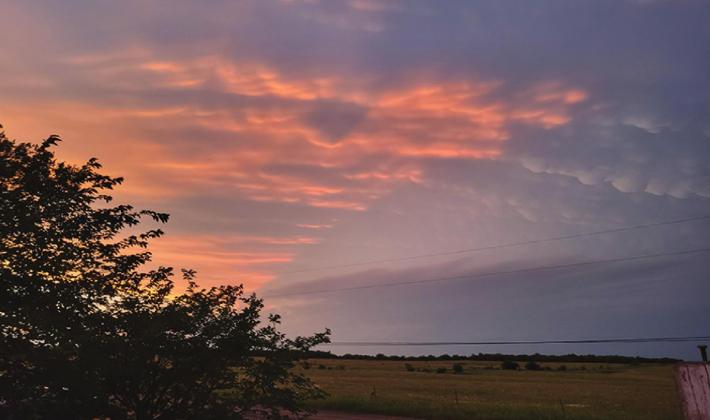The lunar eclipse, coupled with the storm that rolled into Texoma on May 15, made an interesting sky for residents to look at. The lunar eclipse, also dubbed the rare “Super Flower blood moon,” was the first eclipse of 2022 and the first lunar eclipse since May 2021.
According to NASA, a blood moon occurs during a total lunar eclipse event – when the Earth sits directly between the sun and the moon, keeping the moon in total darkness.
The eclipse emitted a faint, reddish glow from the red wavelengths that filtered through Earth’s atmosphere onto the moon’s surface. The red tint comes from Earth’s air molecules.
"When this happens, the only light that reaches the moon's surface is from the edges of the Earth's atmosphere," NASA website noted. "The air molecules from Earth's atmosphere scatter out most of the blue light. The remaining light reflects onto the moon's surface with a red glow, making the moon appear red in the night sky."
The moon is also called a super moon because the moon is positioned at its closest point to Earth in its orbit, making it appear larger than normal. The flower moon moniker comes from all the flowers associated with spring in the Northern Hemisphere.
The Sunday night event was rare because the entire eclipse was visible from start to finish in some parts of the world. Texoma residents were lucky to be in the part of the world that was able to view the eclipse in its entirety.
The Penumbral Eclipse began at 8:32 p.m., while the Partial Eclipse could be seen at 9:27 p.m. The Full Eclipse was visible at 10:29 p.m. and the Maximum Eclipse was at 11:11 p.m.

